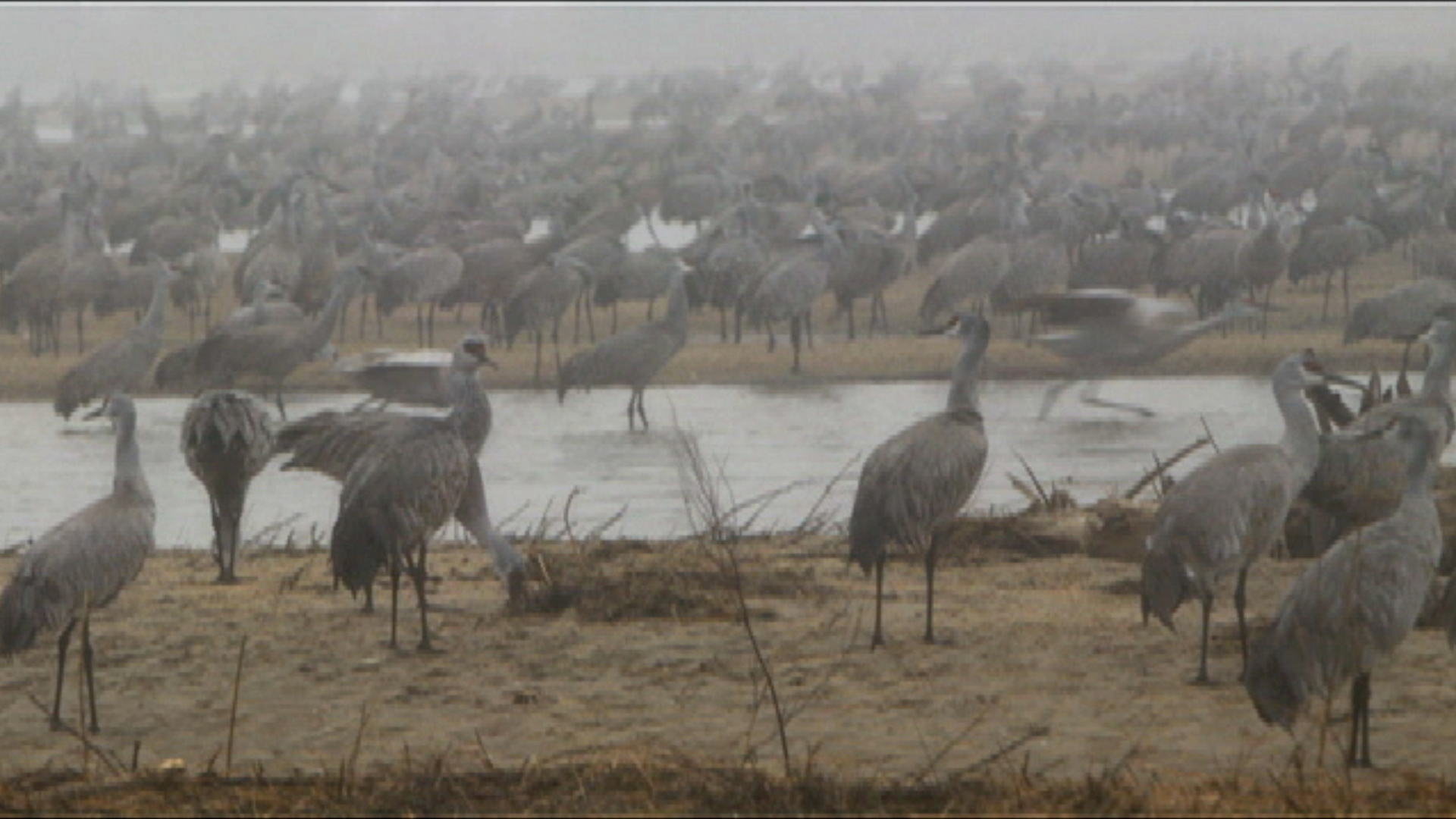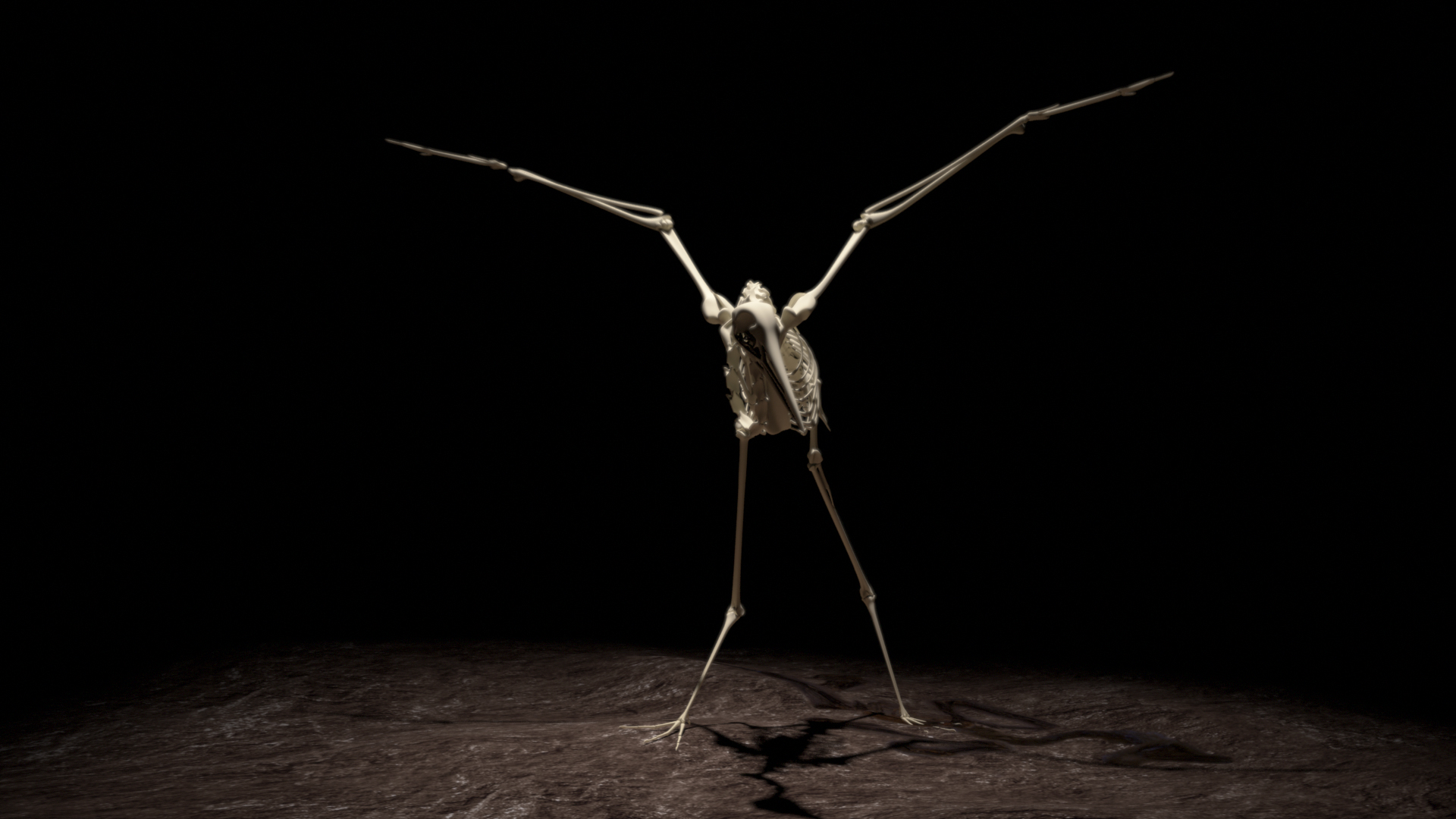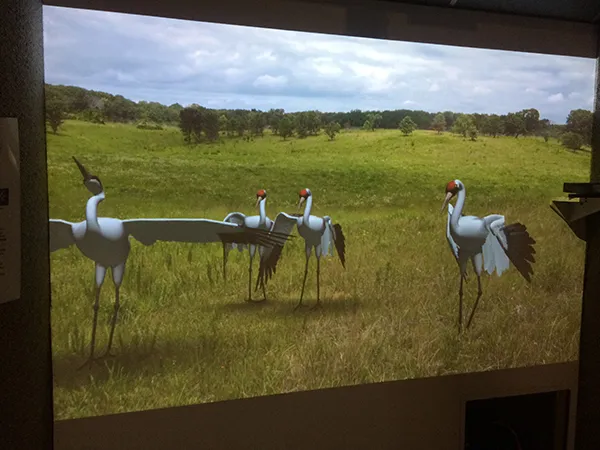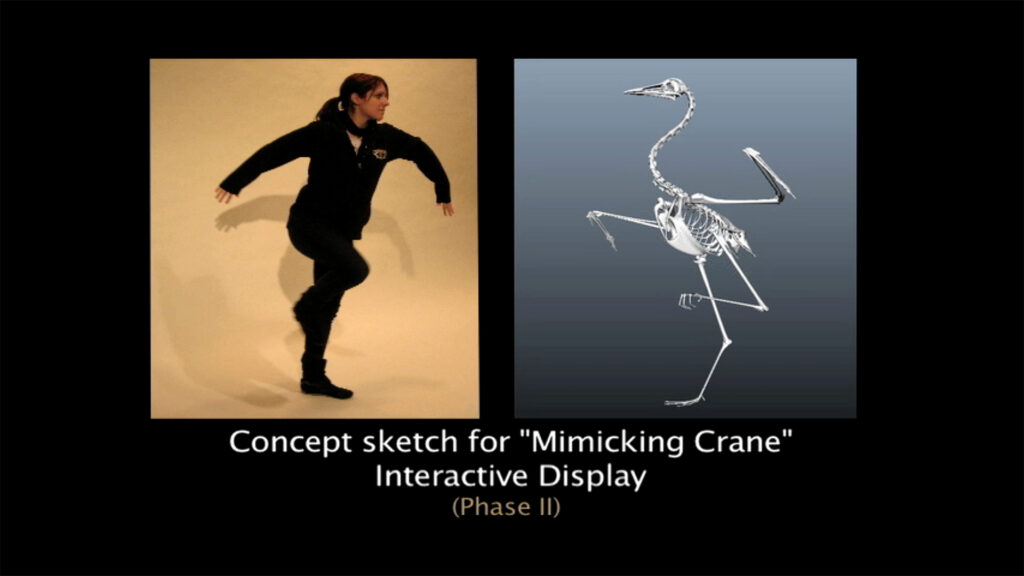Animating an Ancient Skeleton, Interacting with a Contemporary Species

Project Description
Cranes in Motion Project is a multifaceted portrayal of the natural history of the world’s oldest living bird species. This series of works incorporates documentary video, interactive installation, animated and live-action shorts, photography, poetry and sound. The IRC has helped produce two parts of this series; Mimicking Whooper and Prehistoric Resurrection.
Mimicking Whooper
Mimicking Whooper allows the audience the opportunity to observe and mimic the movements with the Whooping Crane. The viewer stands in front of a life size projection of the animated cranes and when they move, the animation mimics their movement creating empathy and a type of communication with the rarely encountered species.The Crane has approximately 30 communicative gestures and many distinct vocal forms of communication that can be explored by the viewer.
Prehistoric Resurrection
In the short film, a 3-D animated crane skeleton emerges from a photo of a 12-million-year-old fossil that transforms into motion; interacts with a flock of present-day Sandhill Cranes until it flies away with them.
Significance
The Whooping Crane has been on the endangered species list since 1967, and is the subject of a population recovery program that includes migration training. The Sandhill Crane has been the subject of the most successful recovery program to date, bringing the species’ numbers back from the brink of extinction. Direct interaction with Cranes is a rare experience, but the artist is inspired to mimic those movements when in the wild.
Cranes in Motion is the culmination of Cook’s extensive research from 2013 to 2016. While in the field, she and her collaborator, Paul Dickinson, documented thousands of migrating cranes at their refueling stops in Nebraska, Wisconsin, and Maryland, capturing their calls, mating dances, migration patterns, nesting, and other activities. Ultimately, Cook creates an experience that helps connect humans to cranes at a time when their wetlands are threatened, opening the way to a greater understanding and empathy for the complex ecological issues surrounding this ancient species.
Collaboration + Methods
The archival photo, along with a contemporary skeleton, was the basis for modeling the crane. In Prehistoric Resurrection, IRC utilized the reconstructed models provided by the Field Museum of Natural History to model the skeleton of a crane in Maya.
The IRC worked with Cathy Cook’s source material, including video, audio, archival photos, and a 3D skeleton, to build models in Maya, and an interactive space using Unity 3D game engine. The IRC used Kinect to develop a software application to allow viewers to control an animated crane, or mimic and dance with the onscreen bird.The outcome was used to create the interactive installation “Mimicking Whooper” and the short film “Prehistoric Resurrection.”




Funding + Outcomes
Initial funding for the Cranes in Motion project was provided by UMBC Special Research Assistantship/Initiative Support grant.
Cranes in Motion Screenings & Awards
2019 – SPECTRUM: 2019 Visual Arts Faculty Exhibition, CADVC, UMBC, Baltimore MD.
2016 – River Revitalization Foundation, “Full Moon Film Festival”, group show, Milwaukee, WI.
– Creative Alliance, “Baltimore Filmmaker Shorts Showcase”, group show, Baltimore, MD.
– “Women Over 50 Film Festival”, London, UK
– “The Block Film and Art Festival”, Logan, Utah
– “Creation International Film Festival”, Ontario, Canada
– “Sandhill Crane Festival”, Lodi, CA.
2014 – Milwaukee Art Museum, outdoor exhibition “Temporary Resurfacing”, group show, Milwaukee, WI.
Mimicking Whooper Screening & Awards
2019 – SPECTRUM: 2019 Visual Arts Faculty Exhibition, CADVC, UMBC, Baltimore MD.
2018 – Manawa Public Library, Manawa, WI.
2017 – “Birdland and the Anthropocene”, group show, Peale Museum, Baltimore MD.
2017 – “SPARK,” A Light City Satellite Art Space – UMBC, Baltimore, MD.
2016 – Mitchell Str. District, outdoor exhibition “Temporary Resurfacing 2016”, group show, Milwaukee, WI.
2016 – UMBC, “50th Anniversary Celebration”, Baltimore, MD.
2016 – University of MD – College Park, MD.
2016 – “Sandhill Crane Festival”, Lodi, CA.
2016- VisArts, Premiere of Cranes in Motion, Rockville, MD.
2014 – “CIRCA Catalyst: Cathy Cook & Lynne Parks, Cranes in Motion” – UMBC, October 20, 2012 (in-progress)
You can see the entirety of the project on Cathy Cook’s website.
Researchers and Creators
Collaborators: Cathy Cook, Associate Professor of Visual Arts, and Paul Dickinson, sound artist
Undergraduate Intern: Deborah Firestone
Undergraduate Programmer: Boris Boiko
IRC Technical Director – Animation: Ryan Zuber
IRC Technical Director – Programming: Mark Jarzynski
Research Support
Visual Arts University of MD. Baltimore County (UMBC) SRAIS Grant
Imaging Research Center UMBC SFRF Grant
The Field Museum Chicago, IL.
International Crane Foundation (ICF) Baraboo, WI.
University of Nebraska State Museum Archives Lincoln, NE.
Rowe Sanctuary Audubon, NE.
Patuxent Wildlife Research Center Laurel, MD.
Imaging Research Center, UMBC © 2024
